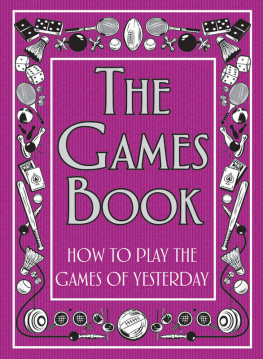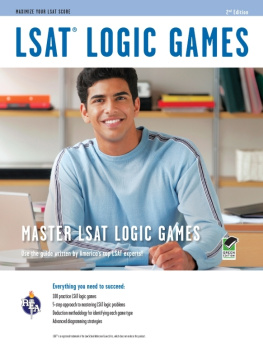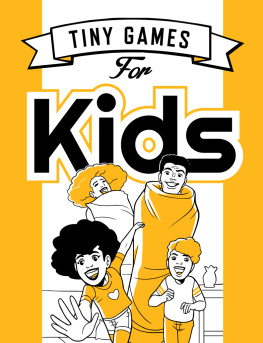McGRAW-HILLs
CONQUERING LSAT LOGIC GAMES
McGRAW-HILLs
CONQUERING LSAT LOGIC GAMES
Third EditionCURVEBREAKERS

Copyright 2010, 2008, 2006 by McGraw-Hill. All rights reserved. Except as permitted under the United States Copyright Act of 1976, no part of this publication may be reproduced or distributed in any form or by any means, or stored in a database or retrieval system, without the prior written permission of the publisher. ISBN: 978-0-07-171787-8 MHID: 0-07-171787-0 The material in this eBook also appears in the print version of this title: ISBN: 978-0-07-171788-5, MHID: 0-07-171788-9. All trademarks are trademarks of their respective owners. Rather than put a trademark symbol after every occurrence of a trademarked name, we use names in an editorial fashion only, and to the benefit of the trademark owner, with no intention of infringement of the trademark.
Where such designations appear in this book, they have been printed with initial caps. McGraw-Hill eBooks are available at special quantity discounts to use as premiums and sales promotions, or for use in corporate training programs. To contact a representative please e-mail us at bulksales@mcgraw-hill.com. This publication is designed to provide accurate and authoritative information in regard to the subject matter covered. It is sold with the understanding that neither the author nor the publisher is engaged in rendering legal, accounting, or other professional services. From a Declaration of Principles jointly adopted by a Committee of
the American Bar Association and a Committee of Publishers. TERMS OF USE This is a copyrighted work and The McGraw-Hill Companies, Inc. (McGraw-Hill) and its licensors reserve all rights in and to the work. (McGraw-Hill) and its licensors reserve all rights in and to the work.
Use of this work is subject to these terms. Except as permitted under the Copyright Act of 1976 and the right to store and retrieve one copy of the work, you may not decompile, disassemble, reverse engineer, reproduce, modify, create derivative works based upon, transmit, distribute, disseminate, sell, publish or sublicense the work or any part of it without McGraw-Hills prior consent. You may use the work for your own noncommercial and personal use; any other use of the work is strictly prohibited. Your right to use the work may be terminated if you fail to comply with these terms. THE WORK IS PROVIDED AS IS. McGRAW-HILL AND ITS LICENSORS MAKE NO GUARANTEES OR WARRANTIES AS TO THE ACCURACY, ADEQUACY OR COMPLETENESS OF OR RESULTS TO BE OBTAINED FROM USING THE WORK, INCLUDING ANY INFORMATION THAT CAN BE ACCESSED THROUGH THE WORK VIA HYPERLINK OR OTHERWISE, AND EXPRESSLY DISCLAIM ANY WARRANTY, EXPRESS OR IMPLIED, INCLUDING BUT NOT LIMITED TO IMPLIED WARRANTIES OF MERCHANTABILITY OR FITNESS FOR A PARTICULAR PURPOSE.
McGraw-Hill and its licensors do not warrant or guarantee that the functions contained in the work will meet your requirements or that its operation will be uninterrupted or error free. Neither McGraw-Hill nor its licensors shall be liable to you or anyone else for any inaccuracy, error or omission, regardless of cause, in the work or for any damages resulting therefrom. McGraw-Hill has no responsibility for the content of any information accessed through the work. Under no circumstances shall McGraw-Hill and/or its licensors be liable for any indirect, incidental, special, punitive, consequential or similar damages that result from the use of or inability to use the work, even if any of them has been advised of the possibility of such damages. This limitation of liability shall apply to any claim or cause whatsoever whether such claim or cause arises in contract, tort or otherwise.
CONTENTS
| Editor |
| Chris Keenum |
| Special Thanks |
Nick Degani
Josh Salzman
Matt Ott
Evan Magers |
ABOUT CURVEBREAKERS
Curvebreakers is an LSAT preparation program created by Harvard Law students.
Our program dissects the LSAT at a depth unparalleled by other programs currently available and at a price that is a small fraction of what competing programs charge. We watch each year as numerous aspiring law students pay exorbitant amounts for LSAT courses that do not adequately subdivide the LSAT into manageable and learnable portions. Many of these students pay over a thousand dollars and still end up missing out on the education and scores that they deserve. Curvebreakers provides the answer to this problem by offering superior educational materials at reasonable pricesa rare combination in todays test prep market. We believe, and know personally, that the only way to achieve on the LSAT is through the dedicated study of materials that effectively separate the different types of LSAT questions into their logical components. Our system introduces and analyzes complicated logical components in a step-by-step fashion that allows students to assimilate the information easily and quickly.
We elucidate the simpler concepts first in order to develop a secure base for students, allowing them to progress to mastery of the more difficult concepts at later stages. When students combine our methodological programs with a good work ethic, they maximize their potential to receive an excellent LSAT score. McGRAW-HILLs
CONQUERING LSAT LOGIC GAMES
INTRODUCTION
The analytical reasoning section is one of the most difficult LSAT sections for novice test-takers. However, test-takers who are willing to work at it can greatly improve their analytical reasoning score. Many analytical reasoning questions can be simplified and solved with very basic diagramming techniques that people would not use intuitively. Even the most complicated logic games can be solved using advanced techniques derived from these basic techniques, which is why it helps to learn and consistently adhere to a single solving system for this question type.
The Curvebreakers logic games solving system helped us to master the logic games section on the LSAT and to gain admittance to top-notch law schools across the country. We are confident that the system can do the same for you. After learning the Curvebreakers system, you will be able to 1. Recall all facets of the fact pattern. 2. 3. 3.
Solve logic game questions quickly. 4. Solve logic game questions accurately.
LSAT Logic Games
STRUCTURE The LSAT logic games section always contains exactly four different logic games. Each game consists of a fact pattern that contains a couple of sentences describing the general and universal constraints of the game. Based on the constraints set by the fact pattern, five to seven questions are asked about the configuration of the variables in the game.
Sometimes the questions repeal certain constraints set in the fact pattern, and sometimes they add to the constraints. Regardless, any constraint set within a specific question ends immediately after you answer that specific question; it does not apply to subsequent or preceding questions. Only the constraints in the fact pattern have universal influence on the entire game. Here is an example of a logic game:
| Fact Pattern Seven passengers, named Anna, Bill, Chris, Dave, Emily, Fanny, and Gina are traveling by train from Atlanta to Boston. No two passengers sit in the same car, and there is a total of seven cars on the train, numbered 1 through 7. |
Next page









 Copyright 2010, 2008, 2006 by McGraw-Hill. All rights reserved. Except as permitted under the United States Copyright Act of 1976, no part of this publication may be reproduced or distributed in any form or by any means, or stored in a database or retrieval system, without the prior written permission of the publisher. ISBN: 978-0-07-171787-8 MHID: 0-07-171787-0 The material in this eBook also appears in the print version of this title: ISBN: 978-0-07-171788-5, MHID: 0-07-171788-9. All trademarks are trademarks of their respective owners. Rather than put a trademark symbol after every occurrence of a trademarked name, we use names in an editorial fashion only, and to the benefit of the trademark owner, with no intention of infringement of the trademark.
Copyright 2010, 2008, 2006 by McGraw-Hill. All rights reserved. Except as permitted under the United States Copyright Act of 1976, no part of this publication may be reproduced or distributed in any form or by any means, or stored in a database or retrieval system, without the prior written permission of the publisher. ISBN: 978-0-07-171787-8 MHID: 0-07-171787-0 The material in this eBook also appears in the print version of this title: ISBN: 978-0-07-171788-5, MHID: 0-07-171788-9. All trademarks are trademarks of their respective owners. Rather than put a trademark symbol after every occurrence of a trademarked name, we use names in an editorial fashion only, and to the benefit of the trademark owner, with no intention of infringement of the trademark.